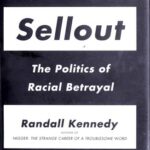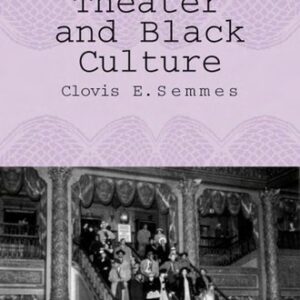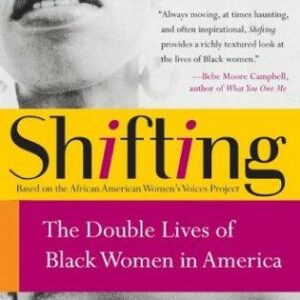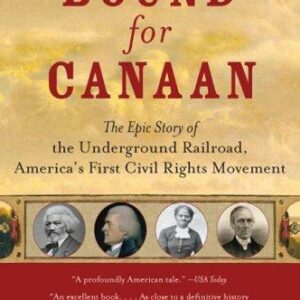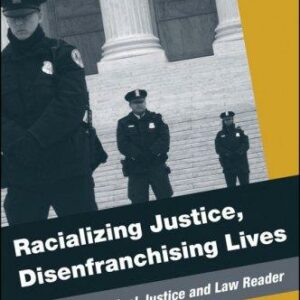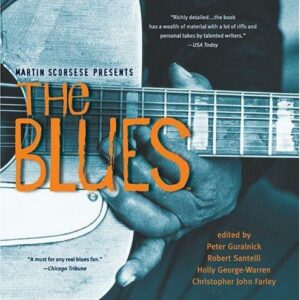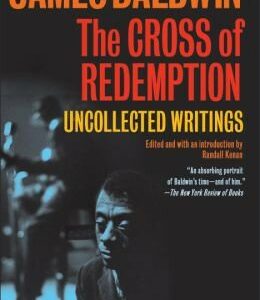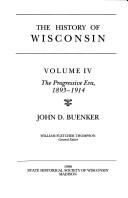Sellout
$22.00
| Title | Range | Discount |
|---|---|---|
| Trade Discount | 5 + | 25% |
- Description
- Additional information
Description
In the wake of his controversial national best-seller, Nigger: The Strange Career of a Troublesome Word, Randall Kennedy grapples brilliantly and judiciously with another stigma of our racial discourse: "selling out," or racial betrayal, which is a subject of much anxiety and acrimony in Black America. He atomizes the vicissitudes of the term and shows how its usage bedevils blacks and whites, while elucidating the effects it has on individuals and on our society as a whole.
Kennedy begins his exploration of selling out with a cogent, historical definition of the "black" community, accounting precisely for who is considered black and who is not. He looks at the ways in which prominent members of that community–Colin Powell, Condoleezza Rice, and Barack Obama, among others–have been stigmatized as sellouts. He outlines the history of the suspicion of racial betrayal among blacks, and he shows how current fears of selling out are expressed in thought and practice. He offers a rigorous and bracing case study of the quintessential "sellout"–Supreme Court Justice Clarence Thomas, perhaps the most vilified black public official in American history. And he gives is a first-person reckoning of how he himself has dealt with accusations of having sold out at Harvard, especially after the publication of Nigger.
Lucidly and powerfully articulated, Sellout is essential to any discussion of the troubled history of race in America.
Randall Kennedy is the Michael R. Klein Professor of Law at Harvard University. He is a member of the bars of the District of Columbia and the Supreme Court of the United States, a fellow of the American Academy of Arts and Sciences, and a member of the American Philosophical Association. His book Race, Crime, and the Law won the Robert F. Kennedy Book Award.
Chapter One: Who Is "Black"?"How difficult it sometimes is to know where the black begins and the white ends."—Booker T. Washington, Up from Slavery (1901)
Soon after declaring his candidacy for the presidency of the United States, Senator Barack Obama was asked on the television program 60 Minutes when he had "decided" that he was black.[1] One of the reasons the interviewer posed this question is that Obama’s mother was a white American and his father a black Kenyan. Obama, moreover, had had little contact with his father; he was raised mainly in Hawaii by his mother and her relatives, in settings far afield from conventional black American communities.[2] Against this backdrop, some observers have questioned Obama’s racial standing. "Obama isn’t black," the journalist Debra J. Dickerson asserts, because "in our political and social reality [black] means those descended from West African slaves." Rather, Dickerson continues, "by virtue of his white American mom and his Kenyan dad . . . [Obama] is an American of African immigrant extraction."[3][4]
Obama responded to the question on 60 Minutes by distancing himself from the idea that he had "decided" to be black. He focused on three other considerations: his appearance, the response of onlookers to his appearance, and his shared experience of those responses with others also perceived to be "black." "[I]f you look African American in this society," he remarked, "you’re treated as an African American."[5] In 1940, W. E. B. DuBois quipped that "the black man is a person who must ride ‘Jim Crow’ in Georgia."[6] Obama updated that view, noting that when he tried to catch taxis, drivers were not confused about his race; they all too often refused to pick him up for racially discriminatory reasons, just as they all too often sped by other "black" men.
Discussion of Obama’s racial identity is a highly publicized instance of a feature of American race relations that is often ignored or misunderstood though it has deep historical roots. Many people believe that determining who is "black" is rather easy, a task simplified by the administration of the one-drop rule.[7] Under the one-drop rule, any discernible African ancestry stamps a person as "black." A principal purpose of this doctrine was to address "the problem" of children born of interracial sex who would bear a mixture of physical markers inherited from ancestors situated on different sides of the race line. White supremacists hoped that by definitively categorizing as "African," "black," "Negro," or "colored" anyone whose appearance signaled the presence of an African ancestor, the one-drop rule would protect white bloodlines. It mirrored and stoked Negrophobia by proclaiming that even the tiniest dab of Negro ancestry was sufficiently contaminating to make a person a "nigger." Many white racists have believed what a character exclaims in Thomas Dixon’s novel The Leopard’s Spots—that "a single drop" of Negro blood "kinks the hair, flattens the nose, thickens the lip, puts out the light of intellect, and lights the fires of brutal passions."[8][9]
Many champions of black advancement, however, have also become devotees of the one-drop rule (bereft, of course, of its white supermacist intentions). In her richly detailed defense of the doctrine, Professor Christine B. Hickman writes:
The Devil fashioned [the one-drop rule] out of racism, malice, greed, lust and ignorance, but in so doing he also accomplished good: His rule created the African-American race as we know it today, and while this race had its origins in the peoples of three continents and its members can look very different from one another, over the centuries the Devil’s one-drop rule united this race as a people in the fight against slavery, segregation and racial injustice.[10]
The one-drop rule helped to funnel into one racial camp people who might otherwise have been splintered. It is because of the one-drop rule that some of the most significant leaders among African Americans are considered "black" or "Negro" despite their "white" ancestry; here I think immediately of Frederick Douglass and W. E. B. DuBois. Long denounced as a method for protecting whites against the taint of Negro blood, the one-drop rule is now embraced by some devotees of black unity as a way of reinforcing solidarity and discouraging exit by "blacks" who might otherwise prefer to reinvent themselves racially.
Despite its evident significance, however, the one-drop rule has never been an unchallenged guide to racial definition.[11] For a long period, several states formally defined as "white" individuals with known "black" ancestors. Until early in the twentieth century, several states, including Florida, Georgia, and South Carolina, statutorily decreed that an individual was considered white so long as he or she did not have more than one-eighth Negro "blood." In Virginia, until 1910, a person could be deemed white as long as he or she did not have more than twenty-four percent Negro blood. Not until 1924 did the Old Dominion adopt the one-drop rule.[12] True, in many places, the mere appearance of being a Negro was sufficient to trigger mistreatment, regardless of one’s genealogy or the words of some arcane statute purporting to define racial status. Still, the assigning of racial identity by white authorities has occasioned far more controversy than is generally realized.
Just as some "whites" have adopted rules of racial identification at variance with the one-drop rule, so, too, have some "blacks." Light-skinned descendants of interracial unions have at various times attempted to set themselves apart from those with darker hues. They have labeled themselves differently, for example, eschewing "black" or "Negro" in favor of "FMC"—"free men of color"—or similar formulations. They have created social organizations that resolutely excluded those deemed to be "too dark"—those darker than a light-brown paper bag or those in whose wrists one cannot discern blue veins.[13] They have insisted upon marrying people who were as light as, or preferably lighter than, themselves. The one-drop rule lumps all "colored" people together regardless of the extent to which they are partially white in appearance or ancestry. But some light-skinned people of color have rejected that formula and insisted upon distinguishing themselves from "real" Negroes.[14] Consider the case of William Ellison, who was born into slavery in 1790 in South Carolina. Allowed to purchase his freedom (by a white man who may well have been his biological father), Ellison amassed a sizable fortune, bought and sold slaves, contributed funds to pro-slavery vigilantes, aided the Confederacy, and then, after the Civil War, supported the opponents of Reconstruction. Today many people would describe Ellison as "black" despite his obvious multiraciality. Yet Ellison "did not consider himself a black man but a man of color, a mulatto, a man neither black nor white, a brown man."[15]
Between 1850 and 1920, the United States Census demarcated a category for the "mulatto." Enumerators were initially given virtually no guidance;[16] they used their own judgment, mainly based on appearance, to determine who was "black" as opposed to "mulatto." In 1870, census officials noted that the "mulatto" category included "quadroons, octoroons and all persons having any perceptible trace of African blood."[17] In 1890, officials supplemented the "white," "black," and "mulatto" categories with two new classifications that had previously been subsumed within the definition for mulatto. They admonished enumerators to:
"[b]e particularly careful to distinguish between blacks, mulattoes, quadroons, and octoroons. The word "black" should be used to describe those persons who have three-fourths or more black blood; "mulatto," those persons who have three-eighths to five-eighths black blood; "quadroon," those persons who have one-fourth black blood; and "octoroon," those persons who have one-eighth or any trace of black blood."[18]
At no point were enumerators provided with a methodology for extracting this information or discerning these differences.
The idea of the mulatto has been a gathering point for a wide variety of racial prejudices, fears, myths, and speculations.[19] For one thing, throughout American history there has been a tendency on the part of whites and blacks to favor mulattoes and other mixed-race colored people over plain "blacks." This tendency has been fueled, in large part, by the logic of white supremacy: since whiteness has been perceived to be superior to blackness, lighter complexions have been accorded more prestige than darker ones. Hence the saying: "If you’re black, go back; if you’re brown, stick around; if you’re white, you’re alright."[20][21]
The baleful efflorescence of racist sentiments in the post-World War I era prompted the Census Bureau to simplify its stratification of the American pigmentocracy. After 1920, the Bureau ceased enumerating mulattoes. It adopted the one-drop rule, declaring that persons of "mixed blood" would be "classified according to the nonwhite racial strain . . . [A person] of mixed white . . . and Negro . . . is classified as . . . a Negro . . . regardless of the amount of white blood [he carries]."[22] Under the new regime, writes Professor Joel Williamson, "all Negroes did look alike. On the one side, there were simply Negroes, and on the other the melting pot was busy making everyone [else, except Asians] simply white. Obviously the Bureau was quite willing to add its strength to the effort to create a simply biracial America."[23]
Although skin color is undoubtedly the most salient signal of racial identity in America, other actual or imagined bodily features have also been seen as distinctive markers of Negritude. These include the shapes of heads, feet, lips, and noses as well as the texture of hair.[24] Adjudicating the race of plaintiffs suing for their freedom, a Virginia judge asserted in 1806 that:
"Nature has stamped upon the African and his descendants two characteristic marks, besides the difference of complexion, which often remain visible long after the characteristic distinction of color either disappears or becomes doubtful; a flat nose and a wooly head of hair. The latter of these characteristics disappears the last of all; and so strong an ingredient in the African constitution is this latter character, that it predominates uniformly where the party is in equal degree descended from parents of different complexions."[25]
Yet, the very words used as labels for races—"white," "black," "red," "yellow," and "brown"—highlight the centrality of complexion in American racial consciousness. Skin color has long been the main physiological feature of the uniform that is widely seen as racially identifying the wearer.
So long as procreation stems from parents of the same race, appearance and lineage are typically congruent. Interracial unions give rise to added complexity. Interracial amalgamation will produce some individuals whose features diverge from those commonly ascribed to the races of their ancestors. When conflict arises between looks and lineage, it is the former that usually emerges as the more influential of the two. As Professor Robert Westley observes, "no one who is visually apprehended as Black . . . turns out to be white. . . . The judgment of Blackness is fixed, immediate, irreversible."[26] In notable instances whites have been willing to grant what Professor Daniel Sharfstein terms "racial amnesty" to individuals who appeared to be white.[27] The key to such amnesty, however, has been the appearance of the individuals in question; if they looked obviously "colored" there has been no controversy. They are labeled "colored" or "black" or "Negro" and that is the end of it. Only if they possessed physical traits that might lead them to be seen as white (or something else nonblack) would space be opened allowing for wiggle room in determining their racial placement.
Consider the early nineteenth-century North Carolina case Gobu v. Gobu,[28] in which a white girl found an abandoned baby whom she claimed as her slave. When this enslaved boy grew to maturity he sued for his freedom. No one knew the identity of his biological parents. In appearance, according to the court, he was "of an olive colour, between black and yellow, had long hair and a prominent nose." Judge John Louis Taylor expressly states that if he had recognized the plaintiff as "black," the plaintiff would have borne the burden of proving that he was not a slave. In Judge Taylor’s words: "I acquiesce in the . . . presumption of every black person being a slave." But the plaintiff was not "black"; he was of "mixed blood," meaning that his mother might have been white or an Indian.[29] Given these possibilities, and the absence of any other pertinent evidence, the judge required the slaveholder to bear the burden of proving that the plaintiff was properly enslaved. The judge decided, in short, to give the plaintiff the benefit of the doubt—a benefit withheld from anyone deemed by appearance to be "black."
Neither appearance nor lineage nor the concatenation of the two exhaust the menu of ingredients that have figured into determinations of race. Consider the lawsuit in South Carolina in 1940 in which Virginia Bennett challenged the will of her deceased father, Franklin Capers Bennett.[30] While leaving Virginia unmentioned, the will bequeathed Franklin’s entire estate to his second wife, Louetta Chassereau Bennett. Virginia attacked the validity of Louetta’s marriage to Franklin, asserting among other things that the union had violated the state’s antimiscegenation law. According to Virginia, Louetta was colored, inasmuch as she was more than one-eighth Negro, and was thus prohibited from marrying Franklin, a white man. Virginia’s motivation was clear. She wanted to obtain portions of Franklin’s estate that would be lost to her if her father’s marriage to Louetta was upheld.[31]
The Supreme Court of South Carolina rejected Virginia’s challenge. It ruled that Louetta was not a Negro, despite the presence of "some Negro blood in her veins," because she possessed a reputation as a white person–in the court’s words, she had been "generally accepted as white"—and because she had long "acted white," by doing such things as marrying a white man, attending a white church, sending her children to white schools, and voting in political primaries open only to whites.[32]
The ruling in favor of Louetta Bennett, despite her "negro blood," was firmly rooted in precedent. As far back as 1835, the South Carolina judiciary had weighed considerations other than complexion and lineage in determining racial identification. "We cannot say what admixture of negro blood will make a colored person," Judge William Harper declared. "The condition of the individual is not to be determined solely by a distinct and visible mixture of negro blood, but by reputation, by his reception into society, and [by] his having commonly experienced the privileges of a white man."[33]
In the process by which individuals are racialized, they have little or no control over certain factors—the color of their skin, the identity of their ancestors, the judgments of others, the ascendant protocols of racial categorization. Barack Obama, for instance, has no control over one of the most significant aspects of his case: the fact that some American-born Negroes decline to acknowledge as "African American" or "black" African-born Negroes or their progeny. Professor Valerie Smith notes that "Obama’s ‘black credentials’ have been questioned as much because of his Kenyan father as his white mother."[34] Those who have raised questions on this score emphasize the centrality of slavery in America to their definition of "blackness": to them, a "black" must have an ancestral tie to enslavement in America—clearly a circumstance over which an individual today has no control.
NOTES[1] See cbsnews.com/stories/2007/02/09/60 minutes.
[2] See Barack Obama, Dreams from My Father: A Story of Race and Inheritance (1995, 2004); Michael Barone and Richard E. Cohen, The Almanac of American Politics 2006 (2006), pp. 557-60; CQ’s Politics in America 2006: The 109th Congress, Jackie Koszcuk and H. Amy Stern, eds. (2006) pp.329-30; William Finnegan, "The Candidate," The New Yorker, May 31, 2004.
[3] See Debra J. Dickerson, "Colorblind," Salon.com.2007/01/22. See also Stanley Crouch, "What Obama Isn’t: Black Like Me," New York Daily News, Nov. 2, 2006. For articles canvassing the debate generated by the questioning of Obama’s racial standing, see Marjorie Valbrun, "Black Like Me?," Washington Post, Feb. 16, 2007; "The Obama Card," Los Angeles Times, Feb. 13, 2007, Satta Sharmah, "Is Obama Black Enough?," cjrdaily.org, Feb. 15, 2007; Annette John Hallm "’Black Enough’? "Enough’s Enough," philly.com, March 30, 2007; Brent Staples, "Decoding the Debate Over the Blackness of Barack Obama," New York Times, Feb. 11, 2007; Rachel L. Swarns, "So Far, Obama Can’t Take Black Vote for Granted," New York Times, Feb. 2, 2007.
[4] "African American" is often used synonymously with "black." White and Black Africans who have migrated to the United States have caused consternation in some quarters by designating themselves "African Americans." There are those who contend that the appellation "African American" should be reserved exclusively for American-born blacks. See Rachel L. Swarns, "’African-American’ Becomes a Term for Debate," New York Times, Aug. 29, 2004.
[5] cbsnews.com/stories/2007/02/09/60minutes.
[6] W. E. B. DuBois, Dusk of Dawn: An Essay Toward an Autobiography of a Race Concept, 153 (1940; 1992).
[7] On the history and administration of the one-drop rule see F. James Davis, Who Is Black: One Nation’s Definition (1991); Christine B. Hickman, "The Devil and the One-drop Rule: Racial Categories, African Americans and the U.S. Census," 95 Michigan Law Review 1161 (1997); Daniel J. Sharfstein, "Crossing the Color Line: Racial Migration and the One-drop Rule, 1600-1860," 91 Minnesota Law Review 592 (2007).
[8] Quoted in Randall Kennedy, Interracial Intimacies: Sex, Marriage, Identity and Adoption (2003) p. 298.
[9] Many artists have created drama out of the one-drop rule. Satirizing it, Mark Twain has one of his characters explain why a person who looks whtie and has mostly white ancestors is nonetheless considered "black"—"Thirty-one thirty-seconds of you is white and one thirty-second is nigger, and that part of you is your soul." See Mark Twain, Pudd’nhead Wilson and Those Extraordinary Twins (1894; reprint 1980). Playing off of the one-drop rule in her novel Show Boat (1926), Edna Ferber portrays Steve, a white man, who marries Julie, a Negro passing for white. Informed that the couple are in violation of a state anti-miscegenation statute, a Mississippi sheriff moves to take them into custody. Desperate to avoid arrest, Steve pricks Julie’s finger and sucks some of her blood. When the sheriff approaches, Steve says, "You wouldn’t call a man a white man that’s got negro blood in him, would you?" "No, I wouldn’t; not in Mississippi," the sheriff replies. "One drop of nigger blood makes you a nigger in these parts." That formulation allows the pair to remain free.
[10] Hickman, p. 1166. See also Tanya Kateri Hernandez, "’Multiracial’ Discourse: Racial Classifications in an Era of Colorblind Jurisprudence," 57 Maryland Law Review 98, (1998), pp. 121-28.
[11] A sufficiently stringent interpretation of the one-drop rule could turn the United States into a majority "black" nation. If humankind’s origins are located in Africa, as many scientists now contend, all humans may be carrying a genetic legacy from the so-called Dark Continent. See, e.g. Chris Stringer and Peter Andrews, The Complete World of Human Evolution (2005); Roger Lewin, Human Evolution: An Illustrated Introduction (fifth edition, 2005). It is also very likely, given the nature of interracial sexual intermingling in colonial and antebellum North America, that there are millions of people who think of themselves as "white" and are perceived socially as "white," but who have an unknown American-born black ancestorÑthe proverbial nigger in the woodpile. See Randall Kennedy, Interracial Intimacies: Sex, Marriage, Identity, and Adoption (2003), and Robert P. Stuckert, "African Ancestry of the White American Population," 58 Ohio Journal of Science 155 (1958). Kwame Anthony Appiah, "Does Truth Matter to Identity?" in Race or Ethnicity? On Black and Latino Identity, Jorge J.E. Gracia, ed. (2007) p. 34-35.
When white racial purists sought to amend Virginia’s Racial Integrity Act to make its racial distinctions even more discriminatory, white legislators balked, recognizing that a further narrowing of definitions of whiteness would lead to a situation in which there would be few "white" Virginians left. See Richard B. Sherman, "’The Last Stand’: The Fight for Racial Integrity in Virginia in the 1920s," 54 Journal of Southern History I (1988).
[12] Gilbert Stephenson, Race Distinctions in American Law (1910), p. 15.
[13] See Willard B. Gatewood, Aristocrats of Color: The Black Elite, 1880-1920 (1990), pp. 149-81; Joel Williamson, New People: Miscegenation and Mulattoes in the United States (1995); Kathy Russell, Midge Wilson, and Ronald Hall, The Color Complex: The Politics of Skin Color Among African Americans (1992); Trina Jones, "Shades of Brown: The Law of Skin Color," 49 Duke Law Journal 1487 (2000).
[14] Now it is commonplace for African Americans to refer to themselves as black. Prior to the late 1960s, however, many Negroes perceived it as an insult to be called black. A central achievement of the Black Power Movement was to remove, at least from Negroes’ minds, much of the stigma that America’s white supremacist culture had heaped upon "black." An important artifact of that movement was the anthem by Soul Brother Number One, James Brown, "Say it Loud, I’m Black and I’m Proud." The very need to insist upon that proposition, however, was indicative of the devalued status that had befallen blackness and that continues to burden it in American culture. See Kathy Russell, Midge Wilson, and Ronald Hall, The Color Complex: The Politics of Skin Color Among African Americans (1992); Trina Jones, "Shades of Brown: The Law of Skin Color," 49 Duke Law Journal 1487 (2000).
[15] Michael P. Johnson and James L. Roark, Black Masters: A Free Family of Color in the Old South (1984), p. xi.
[16] Bureau of the Census, U.S. Dept. of Commerce, "Seventh Census of the United States: 1850," (1853) p. xxii; Hickman, p. 1185.
[17] Hickman, p. 1185.
[18] Bureau of the Census, U.S. Dept. of Commerce, Negro Population of the United States 1790-1915, William Koren Katz, ed. (1968) p. 207.
[19] See generally Edward Byron Reuter, The Mulatto in the United States (1918); Joel Williamson, New People: Miscegenation and Mulattoes in the United States (1995); Russell, et al. The Color Complex; Jones, "Shades of Brown."
[20] Some raceologists, however, have posited that mulattoes are inferior to both "pure" whites and "pure" blacks. Defenders of anti-miscegenation laws pointed to the alleged inferiority of mulattoes as basis for prohibiting interracial marriage. See Robert Brent Toplin, "Between Black and White: Attitudes Toward Southern Mulattoes, 1830-1861," 45 Journal of Southern History 185 (1979), and Perez v. Lippold, 198 P.2d 17 (1948) (Shenk, J., dissenting).
[21] See Howard E. Freeman, J. Michael Ross, David Armore, and Thomas F. Pettigrew, "Color Gradation and Attitudes Among Middle-Class Negroes," 31 American Sociological Review 365 (1966), describing a variant of the saying in the text as "an oft-repeated adage among color-sensitive Negroes in the United States."
[22] Bureau of the Census, Dept. of Commerce, Fourteenth Census of the United States: 1920 (1923), p. 10.
[23] Williamson, p. 114.
[24] See Stephan Jay Gould, The Mismeasure of Man (1981); John S. Haller, Jr., Outcasts from Evolution: Scientific Attitudes of Racial Inferiority, 1859-1900 (1971); William Stenton, The Leopard’s Spots: Scientific Attitudes Toward Race in America, 1815-59 (1960); Winthrop D. Jordan, White Over Black: American Attitudes Toward the Negro, 1550-1812 (1968).
[25] Hudgins v. Wright, 11 Va. 134 (1806).
[26] Robert Westley, "First-Time Encounter: ‘Passing’ Revisited and Demystification as a Critical Practice," 19 Yale Law & Policy Review 297, 348 (2000). See also Gerald Horne, The Color of Fascism: Lawrence Dennis, Racial Passing, and the Rise of Right-Wing Extremism in the United States (2006), p. 6.
[27] Sharfstein, "Crossing the Color Line," p. 595.
[28] 1 N.C. 188 (1802).
[29] In North Carolina, as in all antebellum slave states, a child inherited the status of his or her mother. If the mother was free, regardless of her race, her child was free. Race played an important role in determining one’s status in that blacks were presumed to be enslaved while whites were presumed to be free. Some individuals who were "white" as defined by state laws were nonetheless slaves because their mothers were slaves. In some jurisdictions in the colonial period, white women who married enslaved black men were themselves reduced to slavery, a status that their children would then inherit. See Thomas D. Morris, Southern Slavery and the Law, 1619-1860 (1996), and Randall Kennedy, Interracial Intimacies: Sex, Marriage, Identity and Adoption (2003).
[30] Bennett v. Bennett, 10 S.E.2d 23 (1940).
[31] Under South Caroline state law, an individual could will no more than one quarter of his or her estate to anyone other than a spouse. If it could be established that the marriage had been invalid, it would follow that only one-fourth of Franklin Bennett’s estate could pass to the woman he had believed was his wife. The remaining three-quarters would then devolve to relatives, with Virginia presumably standing first in line to benefit. Bennett v. Bennett, 10 S.E.2d 23 (1940).
[32] To the trial judge it was significant that:
"upon the death of [Louetta’s] father and mother, she was first taken into the home of white people’ then she was placed in a church orphanage for white children; she was confirmed…as a communicant of the Holy Communion Church of Charleston, a white church; she was taken from the orphanage and placed in a white home as a member of the family; she married a white man, the marriage was solemnized [in] a white church; she votes in the democratic primaries, both City and State, whose rules bar negroes from voting; her children attend the white public schools…; she is generally accepted as a white person.
Bennett v. Bennett, 10 S.E.2d 23 (1940).
[33] State v. Cantey, 20 S.C.L. 614 (1835).
[34] Professor Valerie Smith in letter to Randall Kennedy, June 10, 2007. See also Orlando Patterson, "The New Black Nativism," Time, Feb. 8, 2007.
Praise for Randall Kennedy
Sellout
“Sellout is brisk and enjoyable, no small feat given the density of its ideas . . . Worth reading for the light it shines on many subtleties of black history.”
â??Los Angeles Times Book Review
“Thought-provoking . . . [Kennedy offers] illuminating evidence that, despite great marks of progress, race’s stranglehold on the nation’s collective conscious remains as strong as ever.”
â??The Washington PostNigger“Provocative . . . Engaging and informative.”
â??The New York Times
“Kennedy’s commitment to racial justice is plain . . . He frequently throws the cold water of common sense upon issues that are too often cloaked in glib histrionics.”
â??The New Republic
Race, Crime, and the Law“Admirable, courageous, and meticulously fair and honest.”
â??The New York Times Book Review
“[Kennedy] is doing the smartest work in the area of race.”
â??National Law Journal
Interracial Intimacies“As definitive as it is defiant . . . One of the most important books on race in recent memory.”
â??The Columbus Dispatch
“We urgently need Kennedy, his courage and convictions . . . For some time [he] has been a member of that small coterie of our most lucid big thinkers about race.”
â??The Washington Post
Additional information
| Weight | 1 oz |
|---|---|
| Dimensions | 1 × 5 × 8 in |


